Pirates! Gold is one of those rare games that was so far ahead of its time it doesn’t even seem possible. The mostly unstructured, non-linear, open world game – which combines aspects of the action, strategy and business genres – feels like it should have been more than the humble Sega Genesis could handle, and that even it could, it would have been far too advanced conceptually for a generation of gamers used to playing stuff like Streets of Rage and Sonic the Hedgehog; like a tribe of cavemen suddenly coming into contact with an aircraft carrier. Or a typical Genesis owner coming into contact with an aircraft carrier, for that matter. It’s a truly groundbreaking title with such a completely fresh perspective that it gave us ways to play that we didn’t merely think weren’t possible, but had never even conceived of.
Well… unless you played the original Pirates!, that is.
 Pirates! Gold is actually the new-and-improved version of Pirates!, a PC game originally released in 1987 by genius game designer Sid Meier (this hopefully explains the reason for the otherwise insane use of an exclamation mark in the middle of the title). And if you think about how revolutionary Pirates! Gold seems for a Genesis game, just imagine something like that appearing on the NES, which it totally did. Having been shown the future of video games, both gamers and game developers of the mid-80s responded with a collective shrug – the game sold decently (on the PC, anyway), but wasn’t a blockbuster. Only a handful of other games showed any kind of influence from it, and video game pirates (as in, pirates that appear in video games, not dudes who illegally copy video games) were once again relegated to taking roles as flamboyantly dressed characters in terrible platforming games.
Pirates! Gold is actually the new-and-improved version of Pirates!, a PC game originally released in 1987 by genius game designer Sid Meier (this hopefully explains the reason for the otherwise insane use of an exclamation mark in the middle of the title). And if you think about how revolutionary Pirates! Gold seems for a Genesis game, just imagine something like that appearing on the NES, which it totally did. Having been shown the future of video games, both gamers and game developers of the mid-80s responded with a collective shrug – the game sold decently (on the PC, anyway), but wasn’t a blockbuster. Only a handful of other games showed any kind of influence from it, and video game pirates (as in, pirates that appear in video games, not dudes who illegally copy video games) were once again relegated to taking roles as flamboyantly dressed characters in terrible platforming games.
Which is way less fun than leaning on a crate and scowling all day.
Still, you can’t keep a good idea down, and six years later Pirates! came roaring back to the PC and Genesis, with improved graphics, music that actually kind of sounded like music, and an impressive “Gold” at the end of it’s title. The gameplay was improved, but not too drastically, because when you’ve got a game where you play as a pirate and sail around a geographically accurate recreation of the Caribbean while getting into sword fights and stealing people’s gold and ships, there honestly isn’t very much to improve upon.
 Pirates! Gold is great for a lot of reasons, but its most appealing feature has always been the freedom that it gives you. You can side with one nation and fight on their behalf, play each faction against each other, or just be a bloodthristy pirate who attacks everybody and then has a lot of trouble finding places to sell all those bags of sugar he keeps stealing. Those of you looking for a non-violent option can even play as a trader, buying goods at low prices and sailing to other cities to sell them for a profit. That’s actually pretty boring, but honestly, if you’re the kind of person who would think to play a game about pirates that way in the first place, it’s probably about all the excitement your tender heart can handle anyway, Princess.
Pirates! Gold is great for a lot of reasons, but its most appealing feature has always been the freedom that it gives you. You can side with one nation and fight on their behalf, play each faction against each other, or just be a bloodthristy pirate who attacks everybody and then has a lot of trouble finding places to sell all those bags of sugar he keeps stealing. Those of you looking for a non-violent option can even play as a trader, buying goods at low prices and sailing to other cities to sell them for a profit. That’s actually pretty boring, but honestly, if you’re the kind of person who would think to play a game about pirates that way in the first place, it’s probably about all the excitement your tender heart can handle anyway, Princess.
 While this freedom is awesome, it also makes it a little easy to get distracted at times, so it’s a good idea to have a goal in mind. Are you trying to complete all ten pirate quests? Reach the highest rank of nobility with all four nations? Get together the biggest ship and crew you possibly can? As your character ages, the game becomes more difficult – and eventually impossible – so there is something of a time limit in the game, and you’re not going to be able to do it all in one playthrough. Therefore, it can be helpful to focus on whatever is most important to you and set an appropriate goal, something that really works with how you want to play the game and what pathway you find to be most rewarding.
While this freedom is awesome, it also makes it a little easy to get distracted at times, so it’s a good idea to have a goal in mind. Are you trying to complete all ten pirate quests? Reach the highest rank of nobility with all four nations? Get together the biggest ship and crew you possibly can? As your character ages, the game becomes more difficult – and eventually impossible – so there is something of a time limit in the game, and you’re not going to be able to do it all in one playthrough. Therefore, it can be helpful to focus on whatever is most important to you and set an appropriate goal, something that really works with how you want to play the game and what pathway you find to be most rewarding.
For example, Stryker and I made it our goal to marry this chick:
Now, our reasons for wanting to do this may seem kind of obvious, and longtime readers of this site may remember that we have a certain fondness for buxom redheads. But there’s more to this that meets the eye. In Pirates! Gold, not all ladies look alike, and the prettier the woman you want to marry, the rarer she is and the more accomplished you need to be before she’ll notice you. In this particular case, we’re probably going to have to wreck havoc all over the Caribbean and get a rum named after us before she notices us (by the way, here’s some quick advice for real life: it’s probably not a great idea to pursue a woman who only recognizes mascots from liquor bottles). So by making this our goal, we’re actually setting ourselves up to experience the majority of the game.
Plus, you know, if we succeed we get to marry a superhot redhead. So there’s that.
 The first thing you do in Pirates! Gold is create a character, and since our goal was to seduce a beautiful woman, we based all of our decisions on what we felt would create maximum sex appeal. For historical period, we went with “The Buccaneer Heroes”, which represents a brief time during the mid 1600s when pirates were looked up to and admired; as opposed to pretty much all the rest of human history when they were generally thought of as smelly murderers with questionable dental hygiene. For nationality, we chose French (naturally), and for special ability, we went with wit & charm, which seemed like a better choice for getting a girl to like us than, say, navigation. Plus, we liked the idea of our character distracting an opponent in the middle of an intense sword fight with a humorous remark (this is about 90% of how I play defense in pick-up hockey games).
The first thing you do in Pirates! Gold is create a character, and since our goal was to seduce a beautiful woman, we based all of our decisions on what we felt would create maximum sex appeal. For historical period, we went with “The Buccaneer Heroes”, which represents a brief time during the mid 1600s when pirates were looked up to and admired; as opposed to pretty much all the rest of human history when they were generally thought of as smelly murderers with questionable dental hygiene. For nationality, we chose French (naturally), and for special ability, we went with wit & charm, which seemed like a better choice for getting a girl to like us than, say, navigation. Plus, we liked the idea of our character distracting an opponent in the middle of an intense sword fight with a humorous remark (this is about 90% of how I play defense in pick-up hockey games).
To seal the deal, we also named our pirate after notorious ladies man Gary Sinise.
Of course, before you can woo the most attractive woman in the world, you have to, you know, actually know where she is (I swear, this was always my problem in high school, too… well, that and also, possibly, that I wouldn’t shut up about Genesis games). Finding her is kind of tricky, because all the marriageable women in the game are daughters of governors, who keep them hidden away and will only introduce them to people they like. To modern reader, that might seem overly protective and paternalistic, but it actually makes a lot of sense in a world where nearly all of the population is male, and the #1 profession of choice is killing people and stealing their money. If I had a daughter in that situation, I’d probably try to prevent her from meeting random strangers, too.
Unfortunately, it’s not very easy to impress a governor in this game. You can’t just make a whole lot of money trading between colonies and then donate the profits to the governor’s re-election campaign like you would today. You can capture some pirates, and sometimes one of the governors will ask you to deliver a message for him – because despite being notorious thieves and killers, pirates still remained trusted mail carriers – but both events are fairly rare occurrences that only impress the rulers a little bit. If you really want to get in good with a governor, meet his daughter, and rack up some impressive titles and lands while you’re at it, you’re going to need to find out who that country is at war with and then start pirating the shit out of them.
Which was the official term for it in pirate days. As in “surrender or we will pirate the shit out of you.”
In the time period we chose, Spain is at war with both France and England, with the Dutch having an alliance with France, but not the kind of alliance where they actually fight Spain together. I guess it’s more of an alliance where France comes over to the Dutch’s house to watch a game or something, and complains about Spain the whole time, while the Dutch just kind of nod sympathetically but never really get involved, because they don’t want to deal with all that nonsense. The Caribbean in the 17th century was a lot like high school – Spain is the jocks, France is the stoners, England is the preppies, and the Dutch are, well, the Dutch are whatever clique you had in your high school that there were only like two kids in, because seriously, the Dutch generally only get two or three cities in almost every scenario. On the flip side, they still have some of those colonies today in real life, making them the only European country with even a slim chance of ever winning the World Baseball Classic.
 In a normal game of Pirates! Gold, it’s advantageous to side with the French and English and fight the Spanish, because the Spanish control most of the cities and have the most money, and there’s more profit to be made robbing the guys who already have money, as opposed to robbing the poor on their behalf. It’s not a game about Wall St., after all. But the marriage aspect alters this logic a bit, because by having the most cities, Spain also has the most governors, the most governor’s daughters, and therefore the highest chance of being home to the hot redhead. The counterargument to that however, is that it’s going to be hard to impress the Spanish governors with so few French or English targets to choose from. The only people who have ever gotten famous from plundering Haiti over and over have been its presidents.
In a normal game of Pirates! Gold, it’s advantageous to side with the French and English and fight the Spanish, because the Spanish control most of the cities and have the most money, and there’s more profit to be made robbing the guys who already have money, as opposed to robbing the poor on their behalf. It’s not a game about Wall St., after all. But the marriage aspect alters this logic a bit, because by having the most cities, Spain also has the most governors, the most governor’s daughters, and therefore the highest chance of being home to the hot redhead. The counterargument to that however, is that it’s going to be hard to impress the Spanish governors with so few French or English targets to choose from. The only people who have ever gotten famous from plundering Haiti over and over have been its presidents.
Hmmm, Santa Claus is actually kind of mean.
The gameplay in Pirates! Gold is probably best described as inexplicably fun. There’s no reason for the game to be this enjoyable – it’s repetitive and a bit on the easy side, with each battle made up of two minigames – ship to ship (or ship to fort) battles, and sword fighting. Neither of these is particularly deep; the ship fighting is largely matter of reaching your target as quickly as possible to trigger the sword fight, and the sword fight, well, let’s just say it ain’t exactly Soul Calibur. And yet, it’s a lot of fun to do. While it’s tempting to claim that Sid Meier somehow figured out the two most fun things in the entire world, then boiled them down to their purest essence in minigame form, it’s probably safer to say that these action sequences are really a distraction, and the true game lies in the strategy that takes place between battles – managing your crew, figuring the best targets to attack at a given time, and knowing when to return to friendly ports to resupply and collect your rewards. Remember, time is always against you, so while swashbuckling and sailing the high seas might get all the attention, at its heart, this game is really all about cold, ruthless efficiency.
And pirating the shit out of Spain.
In addition to plundering gold after a successful raid on a ship or town, you also have the ability to help yourself to their food, sugar, and trade goods. Sugar and goods are merely for reselling, while food is necessary for keeping your crew from starving, making it critically important. When you’re surrounded by professional murderers, it’s best to keep them from getting too hungry. For this reason, I usually just take all the food and leave the sugar and goods behind. While this is surely an additional disaster for the town I’ve just plundered, I like to imagine them using the sugar to bake a series of cakes to stay alive until the next harvest or food shipment arrives. I am the notorious (not to mention charming and witty) Captain Sinise, raiding the Spanish Main, and leaving a trail of diabetes and tooth decay in my wake.
 We could go on and on at great detail about the other features, visuals, music (which is amazing), and just how great this game is, but we’ve never really been that kind of a site. If you really want a thorough, serious review, here’s a good one. But really, all you need to know is this: Nearly five years ago, we decided to come up with a list of the Top 50 Genesis games, starting with a list of all 707 games that were released for the system in the US. We played all 707 games (except one), and 706 times we asked ourselves “Is this game better than Pirates! Gold?”. And all 706 times, that answer has been no. A few – very few – came close, but none ever managed to surpass it.
We could go on and on at great detail about the other features, visuals, music (which is amazing), and just how great this game is, but we’ve never really been that kind of a site. If you really want a thorough, serious review, here’s a good one. But really, all you need to know is this: Nearly five years ago, we decided to come up with a list of the Top 50 Genesis games, starting with a list of all 707 games that were released for the system in the US. We played all 707 games (except one), and 706 times we asked ourselves “Is this game better than Pirates! Gold?”. And all 706 times, that answer has been no. A few – very few – came close, but none ever managed to surpass it.
Pirates! Gold is the best Genesis game ever made.
They still pick their governors this way in Florida.
Availability: Pirates! Gold isn’t available for download on any of the current-gen consoles, but there was a remake in 2005, called Sid Meier’s Pirates! for the PC and Xbox (which works on the Xbox 360), and later the Wii, and iPad. The remake is actually really good, and mostly faithful to the source material, with nearly every aspect of the original gameplay intact, but also more fleshed out, so the game is a bit deeper. I honestly can’t say which version I like better – sometimes I prefer the quicker, simpler, and slightly more charming Genesis game, and sometimes I like to play the somewhat more complex Xbox version. Either way, it’s certainly a worthy remake and I would recommend it to anyone interested in the game but unable to play it on the Genesis.
 Those of you looking for a Genesis version might have to do a little bit of searching. The game wasn’t really well-known back when it came out, so copies today are somewhat rare. That doesn’t mean that it will be prohibitively expensive, though. A decent used copy might cost as little as ten bucks, and even ones with the box and instructions can be had for about $25. There are certainly more expensive copies floating around out there, but for the most part, it looks like the days of selling a single copy of Pirates! Gold on eBay to fund your retirement are over. This is good news for gamers, though not necessarily for me and Stryker.
Those of you looking for a Genesis version might have to do a little bit of searching. The game wasn’t really well-known back when it came out, so copies today are somewhat rare. That doesn’t mean that it will be prohibitively expensive, though. A decent used copy might cost as little as ten bucks, and even ones with the box and instructions can be had for about $25. There are certainly more expensive copies floating around out there, but for the most part, it looks like the days of selling a single copy of Pirates! Gold on eBay to fund your retirement are over. This is good news for gamers, though not necessarily for me and Stryker.
This is pretty much what shopping in Stryker’s game store was like.
One last thing: So that’s it – after nearly 5 years, we’ve now played and written about every single Sega Genesis game released in North America. Stryker and I just want to offer a big “Thank You” to all the readers who have stuck with since the beginning, as well as to the many others who have joined us along the way. I sincerely hope we made you laugh, mostly because the thought of anyone reading our poorly-written, barely researched, misshapen piles of words and thinking they were our best effort at serious journalism is pretty depressing.

























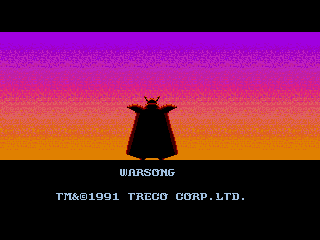

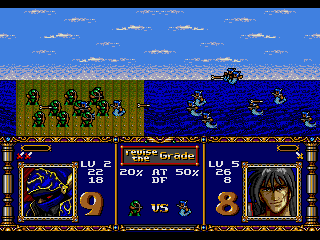
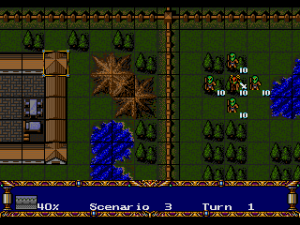

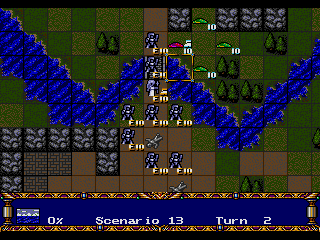


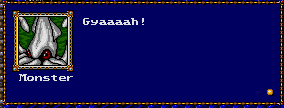
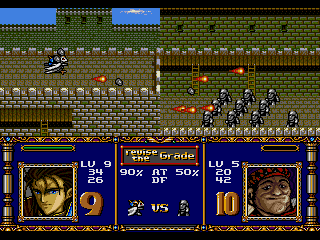

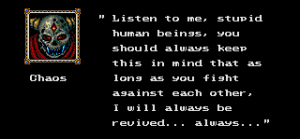
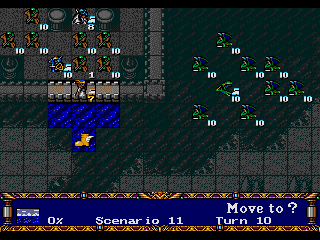
























































































You must be logged in to post a comment.